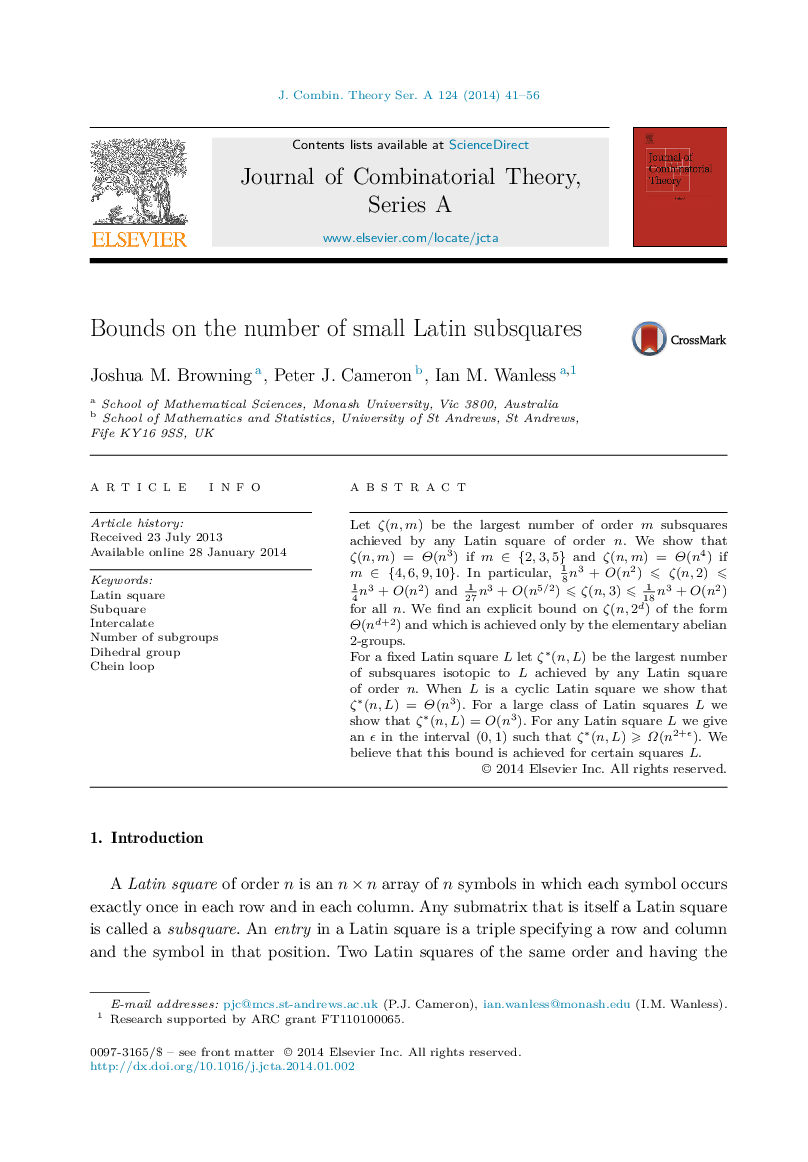| Article ID | Journal | Published Year | Pages | File Type |
|---|---|---|---|---|
| 4655305 | Journal of Combinatorial Theory, Series A | 2014 | 16 Pages |
Let ζ(n,m)ζ(n,m) be the largest number of order m subsquares achieved by any Latin square of order n . We show that ζ(n,m)=Θ(n3)ζ(n,m)=Θ(n3) if m∈{2,3,5}m∈{2,3,5} and ζ(n,m)=Θ(n4)ζ(n,m)=Θ(n4) if m∈{4,6,9,10}m∈{4,6,9,10}. In particular, 18n3+O(n2)≤ζ(n,2)≤14n3+O(n2) and 127n3+O(n5/2)≤ζ(n,3)≤118n3+O(n2) for all n . We find an explicit bound on ζ(n,2d)ζ(n,2d) of the form Θ(nd+2)Θ(nd+2) and which is achieved only by the elementary abelian 2-groups.For a fixed Latin square L let ζ⁎(n,L)ζ⁎(n,L) be the largest number of subsquares isotopic to L achieved by any Latin square of order n. When L is a cyclic Latin square we show that ζ⁎(n,L)=Θ(n3)ζ⁎(n,L)=Θ(n3). For a large class of Latin squares L we show that ζ⁎(n,L)=O(n3)ζ⁎(n,L)=O(n3). For any Latin square L we give an ϵ in the interval (0,1)(0,1) such that ζ⁎(n,L)≥Ω(n2+ϵ)ζ⁎(n,L)≥Ω(n2+ϵ). We believe that this bound is achieved for certain squares L.
